- Technology sector leads global selloff
- Treasuries rally on haven status
- Bitcoin remains under pressure
Key Financial
Yesterday's sharp selloff on Wall Street is showing no signs of ending with futures on the Dow Jones, S&P 500, NASDAQ 100, and Russell 2000 all trading over 1% lower.
European stocks are also falling on the negative sentiment following weaker than expected results from retail giants Walmart and Target. It seems increasing costs are denting profitability at the US retailers as it is become more difficult to pass on higher costs to consumers already struggling with rising inflation.
Gold rallied as a hedge against inflation.
Global Financial Affairs
After the worst daily selloff since June 2020, all four US index futures were in the red, extending the paradigm that the technology sector leads both significant moves lower and higher.
In Europe, the STOXX 600 Index opened 0.55% lower, and had tripled its losses at the time of writing. The technology sector led the decline.
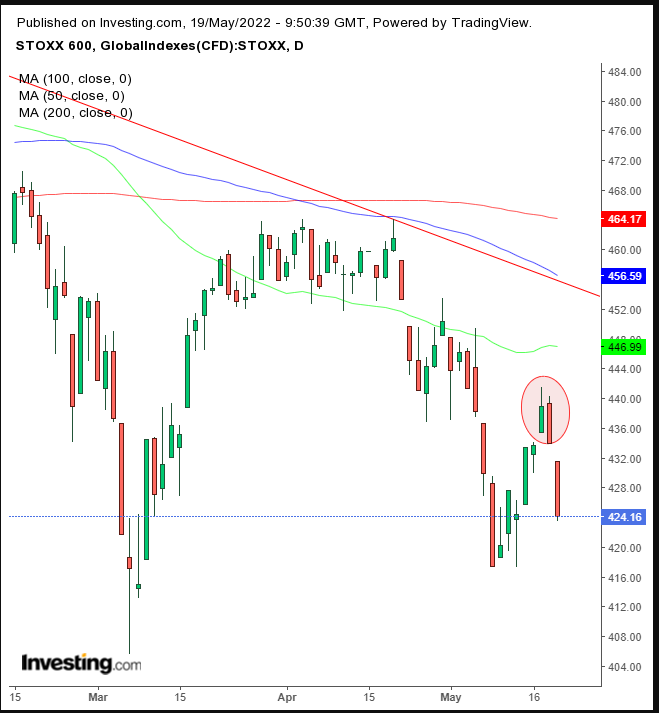
Today's lower open completed an Island Reversal, a trading area whose prices are separated from the rest of the chart and is considered a minor bearish move.
After the first bullish gap, the psychology is that bears won the day when repeating the same gap in the other direction. A gap can be important as it demonstrates that the whole market is on the same page.
The benchmark's major moving averages entered a bearish formation in early April, with each MA falling before a longer one.
Asian markets were also led by Wall Street's drastic drop. The Shanghai Composite was the only game in town for bulls, rising 0.4% despite China's zero-COVID policy which had resulted in strict lockdowns there.
The MSCI's broadest index of Asia-Pacific stocks excluding Japan slid 1.8%, ending four consecutive days of gains.
Australia's ASX 200 underperformed, plunging 1.6%, with technology and bank shares leading declines. The slump in tech is in line with the sector's performance across the globe.
It is generally the first sector to fall out of investors' favor when interest rates are rising as higher rates render growth stocks too expensive.
Cyclical stocks are usually a beneficiary of the move out of technology as they offer value due to their lower valuation. However, this was not the case in Australia where banking shares slid, despite the fact that the RBA is expected to raise rates there amid a tight labor market with unemployment figures at their lowest level since 1974, which suggests investors don't have faith that the central bank will overcome inflation.
Yields on the 10-year Treasury note extended an advance as fears over plunging equities offset concerns of current bond payout losing value as rates rise.
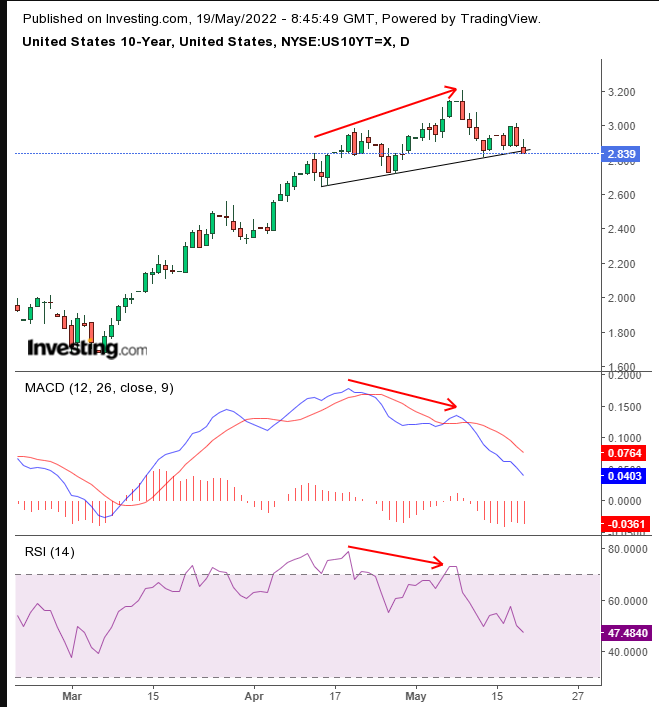
Yields may be completing an Upward-Sloping H&S top, with the MACD and RSI providing negative divergences to the price, suggesting the previous has been unsustainable.
Yields and gold have siphoned capital seeking shelter away from the dollar, removing half of yesterday's rebound.
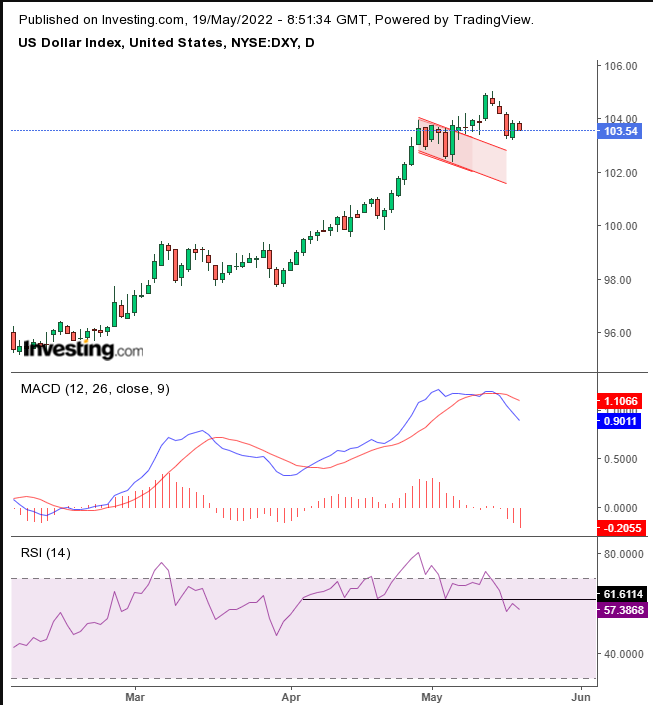
The greenback may fluctuate as supply and demand face off at the support of a Falling Flag, bullish after the preceding seven-day straight rally, at the end of a Return Move.
Beware, however, that both the MACD and the RSI are providing a conflicting picture, suggesting the dollar will reverse from its recent uptrend.
Gold advanced as traders sought out inflation hedges. This shows that the market is not convinced by Fed Chair Jerome Powell's recent assertion that the US central bank will successfully reduce rising inflation.
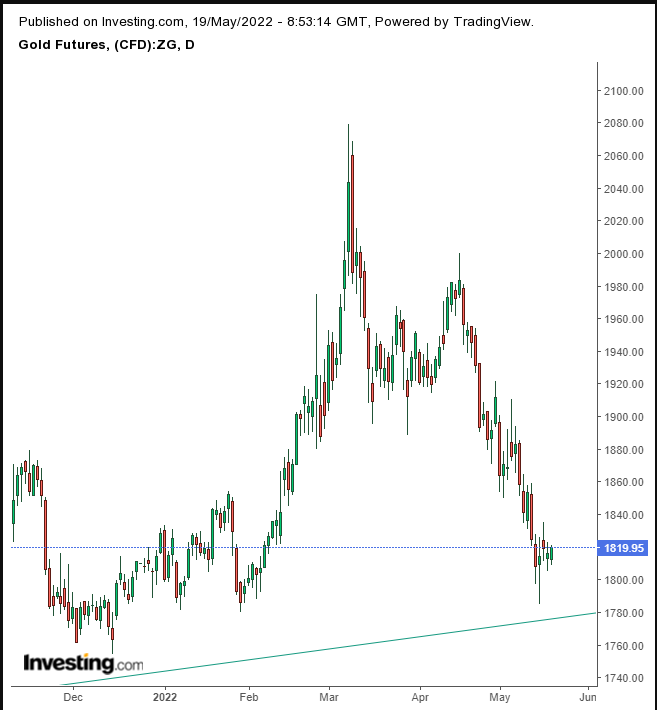
Technically, the yellow metal may be extending a bounce off its rising trendline.
Bitcoin slipped.
The cryptocurrency may have completed a Pennant continuation pattern, bearish following its recent selloff. The price continuously failed attempts to cross the $30,000 key level, increasing our bearish call to single-digit thousands. The sector has been under increased pressure recently.
Oil contracts ending July opened lower.
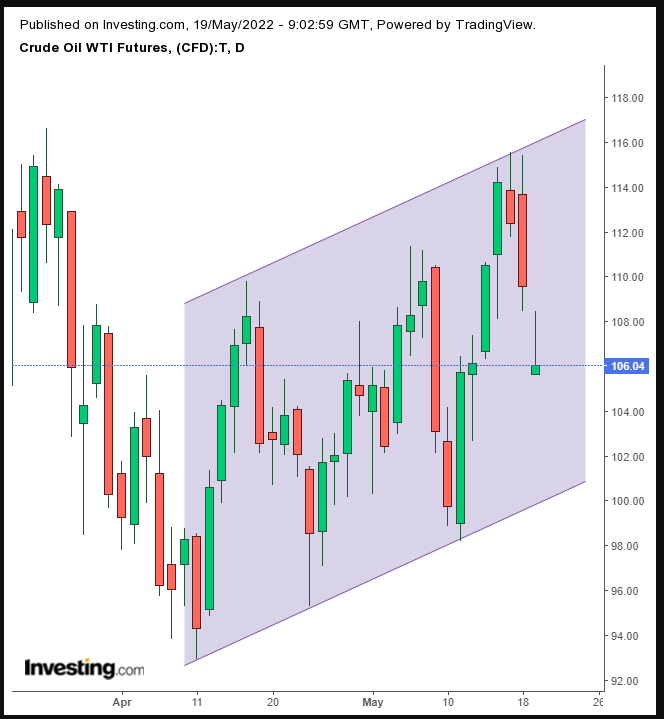
The slide extends the selloff to its third day, towards the bottom of a Rising Channel.
Up Ahead
- UK retail sales are due to released on Friday.
- On Friday, German PPI figures are printed.
- Canada publishes wholesale sales figures on Friday.
Market Moves
Stocks
Currencies
- The euro rose 0.45% to $1.0513
- The British pound rose 0.6% to $1.2407
Bonds
Commodities
- Brent crude fell 0.7% to $108.02 a barrel
- Spot gold rose 0.7% to $1,828.41 an ounce
